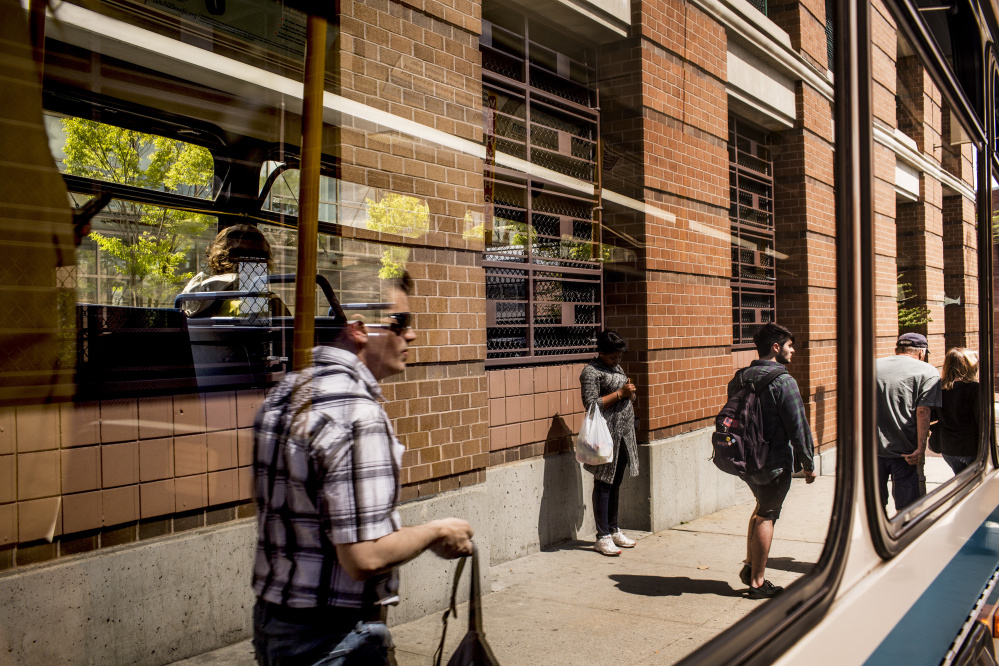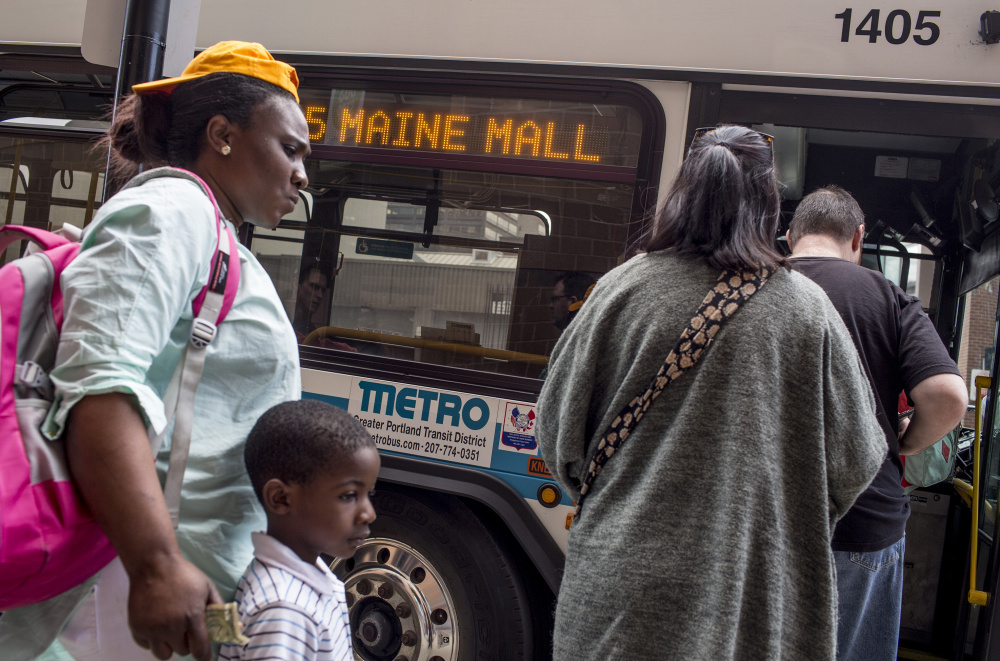Public transportation in Greater Portland is poised to modernize and expand as the Metro bus service launches a route to towns north of Portland and the Metro and other transit companies release online ride-tracking tools.
Next week, a real-time ride-tracking service will be released by Metro, the South Portland bus service and Casco Bay Lines. Customers will be able to use their smartphones or computers to monitor pickup times and schedule their travel down to the minute, instead of relying on less reliable printed schedules.
Then in mid-June, Metro will launch an express bus service to Yarmouth and Freeport, giving commuters and visitors a way to get in and out of downtown Portland.
Both projects have been years in the making, and are part of a broader push to make mass transit more efficient and relevant to people living in the Portland area. Officials hope new services and tools will keep ridership growing. Last year marked the highest Metro ridership in almost 30 years, carrying passengers on more than 1.5 million one-way trips.
“Building ridership is our core mission,” said Metro General Manager Greg Jordan. “That means making the system as modern, as user-friendly as we can.”
The new ride-tracking system, called Southern Maine Transit Tracker, will help users plan their trips on a computer by showing estimated arrival times on bus routes or ferry lines, a transit map with the location of different buses, and even an alarm to alert users when their bus is getting close. Mobile apps will provide similar services to customers with smartphones. Riders also can send a text message to a special number posted at the bus stop to get the estimated time of arrival for the next bus.
Without the new Web-based tools, prospective riders can be turned off from using public transit because printed schedules are unreliable and there’s no way to know if the bus or ferry is going to be late, or how late, Jordan said.
“There is always a little fear whether that bus is going to come or not,” he said. But if people know, down to the minute, when they can expect the bus, they can schedule better and rely on the service, Jordan said.
“This level of information and certainty will give a lot of riders faith that they can rely that the bus is coming,” he said.
TRACKING TOOLS, EXPRESS BUS
Arkeem Fennie, who was waiting for a bus Friday afternoon on Elm Street in Portland, said he was looking forward to using the new tools. He’s been riding buses in Portland for nine years. The buses can run late or even get backed up and then arrive two at a time. He calls Metro to get information about specific buses, but he looks forward to getting the information more quickly and easily.
“That would help a lot,” Fennie said. “That is a big plus, kudos for them.”
The ride-tracking program will kick off June 2, with a night of free transportation on June 3 during the first Friday art walk.
Jordan said customers have repeatedly asked when they can get ride tracking that is already available in other U.S. cities. It has taken awhile for the Portland area to catch up to bigger markets, but it isn’t far behind other small bus networks, Jordan said. “I think as small agencies go, we are ahead of the curve,” he said.
John Duncan of the Portland Area Comprehensive Planning System said the team that built the tools wanted to make sure they were ready to use before a public release.
“You have to do it right the first time or you will risk losing some users,” he said.
Starting June 16, residents in Yarmouth and Freeport will be able to use an express bus service to Portland as part of a three-year pilot project.
The communities and Metro started discussing the proposal more than two years ago. Transit officials targeted the area mostly because of the number of people who commute to Portland, Jordan said. It also presented opportunities for people who want to travel to Freeport and its popular outlet stores.
The express service will have nine round trips five days a week between 6 a.m. and 7 p.m. and a shorter Saturday schedule. A regular one-way fare costs $3.
To keep an express schedule, the bus will have limited stops and stick close to the Interstate 95 corridor. Yarmouth stops will include two park-and-ride lots, Main Street and the Hannaford supermarket. Freeport stops include the L.L. Bean flagship store, Town Hall and L.L. Bean corporate offices.
Mack McKeever, an L.L. Bean spokesman, said the company did not select bus stop locations but intends to let its employees know about the new service.
“We are all about anything that will make it a convenience for employees and customers to get to Freeport,” McKeever said.
BUS RUN TIMES, EXTRA AMENITIES
The buses are outfitted with wireless Internet, USB outlets, extra storage space and bike racks. Jordan said it will take about 30 minutes to travel from Freeport village to Monument Square in Portland, and 20 minutes from Yarmouth village. A complete run from Freeport to the route’s end at the Portland transportation center will take roughly 40 minutes, he said.
The three-year trial is being funded with federal grant money, but Freeport and Yarmouth are each paying $30,000 a year to support the service. Initial estimates are that up to 40,000 riders a year will use the buses, Jordan said. After the pilot period, the project will be reviewed to see if it is feasible to continue, he said.
Cumberland was considered for the project, but a divided Town Council decided in 2014 not to join.
Randall Bates, the Yarmouth Town Council chairman, said councilors in that town voted unanimously to adopt the service and are optimistic about its chances for success.
“I think everyone is very excited about the possibility that it potentially has for us,” Bates said. “We are trying to get economic development off the ground and help seniors with transportation. I really hope it will work.”
Send questions/comments to the editors.





